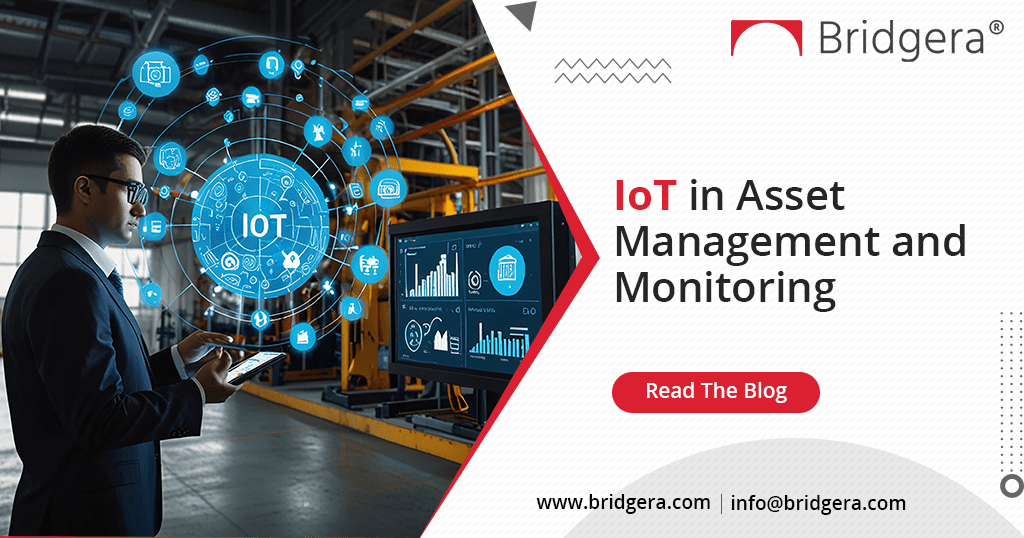In a highly competitive market, asset management and monitoring powered by IoT is fast emerging as a key differentiator to help businesses stand out. Recent research estimates the number of active asset trackers to grow to 267 million by 2027! This highlights how industries across the board are integrating the power of IoT to fuel the growth of Industry 4.0.
In this article, we’ll look at how IoT in asset management and monitoring works, the benefits, important use cases across industries, and key KPIs you must track. Let’s dive right in!
How Does IoT Empower Asset Management and Monitoring?
IoT remote asset monitoring is a process where remote IoT sensors are deployed to regularly and methodically gather real-time data on a variety of industrial assets. This data is then securely stored on a cloud and analyzed to glean a wealth of insights into asset performance and maintenance.
Basically, the IoT revolution helps companies integrate their physical assets with software systems that help them manage small or extremely complex assets from a centralized database.
Top Benefits of IoT in Asset Management and Monitoring
There are several benefits of IoT remote asset monitoring. So much so that it is no longer a luxury, but a necessity to thrive in today’s marketplace.
Improved Overall Equipment Efficiency (OEE)
IoT remote asset management can help companies simultaneously streamline three key areas: equipment performance, productivity, and availability. All three contribute to an improvement in overall equipment efficiency (OEE). Asset lifecycle management ensures that you get the maximum returns out of each and every asset you invest your hard-earned money in.
Real-time data for better business decisions
IoT sensors gather a huge variety of data in real-time. This gives you a wealth of real-time information on how each asset is performing at any given time. This helps stakeholders plan their budgets better and take data-driven decisions for their business.
Better supply chain management
IoT remote asset management provides great visibility and transparency to equipment data across the supply chain. This leads to fewer supply chain disruptions, and improved management.
Predictive maintenance for fewer human errors and interventions
With predictive maintenance solutions, companies on average save up to 40% on the cost of maintenance. Automated alerts reach the right skilled technician whenever a pre-set threshold is reached. In addition, AI powered models can predict downtimes based on patterns of data from your assets, letting you schedule repairs at the nick of time.
Key Industries that Benefit from IoT in Asset Management
Most industries find several use cases and benefits to derive from the deployment of IoT remote asset management. Let’s look at the most popular ones.
OEMs and Manufacturers
IoT remote asset management helps OEMs and manufacturers locate, track, and optimize every equipment. A recent study by Deloitte highlighted how 40% of manufacturers saw tangible benefits like reduction in downtime and increased efficiency after adopting IoT remote asset management solutions. Digital twin solutions can also help manufacturers simulate various scenarios and take the right business decisions at the right time.
Healthcare
Remote asset monitoring can enhance the lifecycle of life-saving medical equipment. Automated workflows alert hospital personnel whenever critical stocks run low and can predict stock requirements based on past trends. Remote patient monitoring can help medical care providers reduce hospital readmissions and take proactive approaches to improving patient care outcomes.
Logistics
IoT asset management can help companies manage their fleets, perform quality checks at regular intervals, and enhance traceability of all assets and goods. Companies gain better control and insights into value chain journey and enhance safety of their personnel and goods.
Apart from these industries, IoT remote asset management has seen implementation across industries like construction, retail, agriculture, and even in the development of smart cities.
Metrics to Measure the Efficacy of IoT in Remote Asset Monitoring
Here are some important metrics to evaluate the success of your IoT remote asset monitoring solutions after implementation.
Asset downtime and Asset uptime
Your maintenance costs will be one of the most crucial KPIs you must track. The goal is to reduce asset downtime and maximize asset uptime.
Meantime between Failures (MTBF)
This KPI measures the average time an equipment functions before stoppages or repairs. It indicates the level of availability of your equipment. It’s also an indicator of how accurate the data collected by your IoT sensors is, so don’t skip out on this data.
Impact on OpEx and CapEx
CapEx is the cost of acquiring long-term assets, and OpEx is the measure of how much you’re spending on day-to-day operations. Measuring the impact of your IoT project on these two KPIs is crucial. Ideally, you want your OpEx to drop with the right predictive maintenance solution. Asset lifecycle management can greatly improve CapEx in the long run.
Partner with an Experienced IoT Remote Asset Management Provider
An experienced IoT company is crucial to the success of your remote asset management project. After all, you’re investing a considerable amount of time and energy. A reliable partner like Bridgera can empower you all the way from the Proof-of-Concept stage to bug resolution after implementation.
At Bridgera, we bring 8 years of expertise in the OEM, manufacturing, healthcare, Oil & Gas, and construction industries.
Contact us for a quick consultation to find out how we can help your business keep scaling in Industry 4.0.
About Bridgera: Bridgera effortlessly combines innovation and expertise to deliver cutting-edge solutions using connected intelligence. We engineer experiences that go beyond expectations, equipping our clients with the tools they need to excel in an increasingly interconnected world. Since our establishment in 2015, Bridgera, headquartered in Raleigh, NC, has specialized in crafting and managing tailored SaaS solutions for web, mobile, and IoT applications across North America.
About Author: Krishna Varma is a writer and researcher, who enjoys writing about technology, IoT, and lifestyle. When she isn’t writing and reading, you’ll find her relaxing with a quiet cup of tea over the weekends.
